State Opening of Parliament
[5] The State Opening of Parliament is a ceremony filled with historical ritual, constitutional symbolism and practical significance relating to the governance of the United Kingdom.They are joined by senior representatives of the judiciary, who sit on woolsacks in the centre of the Chamber, and members of the diplomatic corps, who are seated behind the Bishops.[9] The Treasurer and Comptroller, along with other senior members of the Royal Household, accompany the monarch in the carriage procession; but the Lord Chamberlain does not join them.[9][10] The Vice-Chamberlain's imprisonment is now purely ceremonial, though they do remain under guard; originally, it guaranteed the safety of the Sovereign as they entered a possibly hostile Parliament.The King's Bargemaster and Watermen accompany it, acting as footmen (a reminder of past times when the regalia were brought from the Tower of London by river).[1] Motioned by the monarch, the Lord Great Chamberlain raises his white staff of office to signal the official known as Black Rod to summon the House of Commons.On Black Rod's approach, the Doorkeeper of the Commons orders that the doors are slammed shut against them, symbolising the rights of parliament and its independence from the monarch.This ritual is strongly associated with the occasion when King Charles I stormed into the House of Commons in 1642 in an unsuccessful attempt to arrest five members of Parliament, including the celebrated English patriot and leading parliamentarian John Hampden.[19] This customary intervention was omitted by Mr Skinner in 2015, claiming that he had "bigger fish to fry than uttering something", due to a dispute over seating with the Scottish Nationalists.The speech is written by the Prime Minister and their cabinet members, and reflects the legislative agenda for which the Government seeks the agreement of both Houses of Parliament.It is traditionally written on goatskin vellum, and presented on bended knee for the monarch to read by the Lord Chancellor, who produces the scroll from a satchel-like bag.Traditionally, rather than turning their back on the Sovereign, which might appear disrespectful, the Lord Chancellor walks backwards down the steps of the throne, continuing to face the monarch.The monarch concludes the speech in saying: "My Lords and Members of the House of Commons, I pray that the blessing of Almighty God may rest upon your counsels."This silence, however, was broken in 1998, when Queen Elizabeth II announced the government's plan of abolishing the right of hereditary peers to automatically sit in the House of Lords.[1] On certain other occasions through history, ceremonial aspects of the State Opening have been scaled back for specific reasons (including plague in 1593, threats of assassination in 1679 and wartime restrictions in place from 1917-1919 and 1939-1948).[1] On three occasions in the reign of Queen Elizabeth II (namely March 1974, June 2017 and December 2019) the State Opening was conducted in a "dressed-down" manner, due to the snap general elections held in those years.Inside the Palace, there were reduced numbers in the procession, and outside motor cars were used in place of horse-drawn carriages (and no military escort accompanied them).The Queen wore day dress and arrived by car at Westminster,[27] where seating was restricted: 74 were allowed in the Lords Chamber, whilst 34 further MPs and peers were able to participate from the gallery.To prevent the spread of the virus, mask-wearing and testing was enforced, and the Lord Chancellor did not directly pass the speech to the Queen, but placed it on a table next to the throne.[28] The State Opening in May 2022 was also scheduled to take place with reduced ceremonial, due to the Queen suffering "episodic mobility problems" (which eventually led to her being absent on the day).In this period, the parliamentary gathering began to be preceded by an open-air State Procession (which often attracted large numbers of onlookers): the Monarch, together with Household retinue, would proceed in State from whichever royal residence was being used, first to Westminster Abbey for a service (usually a Mass of the Holy Ghost, prior to the Reformation), and thence on foot (accompanied by the Lords Spiritual and Temporal in their robes) to the Palace of Westminster for the Opening itself.In the main body of the Chamber, the Bishops are seated on benches to the King's right wearing their parliamentary robes, with the Mitred Abbots behind them.[Note 5] The Lords Temporal are seated to the King's left and on the cross-bench, the status of peers is indicated by the number of miniver bars (white fur edged with gold oak-leaf lace) on their peerage robes: 4 for a duke, 3½ for a marquess, 3 for an earl, 2½ for a viscount, and 2 for a baron.William Weston, Prior of the Hospital of St John of Jerusalem, premier baron in the roll of peers, dressed in black, sits at the end of the cross-bench.Between 1837 and 1861, Queen Victoria missed the State Opening on only four occasions (each time due to pregnancy); but following the death of the Prince Consort she avoided ceremonial events.[1] It was not until the latter's accession as Edward VII in 1901 that the full state ceremonial of the event was restored (with the king being in regular attendance and reading the speech himself).[52][Note 7] In the 1998 Queen's Speech, Elizabeth II faced an unprecedented outburst when she outlined the government's plan to ban most hereditary peers from sitting in the House of Lords.This was regarded as a considerable act of discourtesy, and the first time in living memory that the sovereign's address, which is normally listened to in total silence, had been interrupted.Though in the past he was a guest sitting in the Knesset's upper deck, the President now attends the ceremony from the speaker's podium and gives his own written address regarding the upcoming session.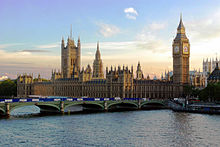

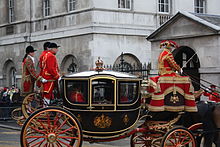





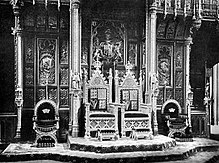




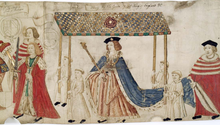

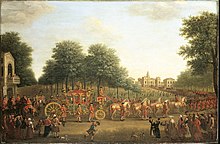

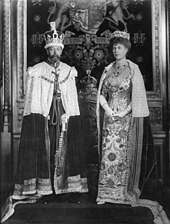

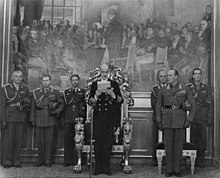
2024 State Opening of ParliamentsessionParliament of the United Kingdomgracious speech from the thronemonarchHM Governmentstate visitsHouse of LordsHouse of CommonsPalace of WestminsterImperial State CrownRobe of Stateon 17 July 20242024 United Kingdom general electionCharles III'sLabour governmentSir Keir StarmerLabourCloth of EstateconsortGreat Officers of StateRoyal HouseholdPeeressesDiplomatic CorpsQueen Alexandra's State CoachKing Edward VII's Town CoachYeomen of the GuardGunpowder PlotJames VI and IGuy FawkesBlessed ParliamentLord Great Chamberlainport wineLords SpiritualLords TemporalParliament robeswoolsacksSerjeant at ArmsSpeaker of the House of Commonspolice inspectorTreasurerComptrollerVice-Chamberlain of the Householdwhite stavesLord ChamberlainVice-ChamberlainCharles ICivil WarDesmond SwayneKris HopkinsChris Heaton-HarrisStuart AndrewMarcus JonesJames MorrisJo ChurchillSamantha DixonCap of MaintenanceKing's BargemasterVictoria TowerLord Chamberlain's OfficeCrown JewellerRoyal GallerySerjeants-at-ArmsState Procession at the State Opening of Parliamentstate coachHousehold Cavalry Mounted Regimentthe national anthemgun saluteGreen ParkRoyal StandardUnion FlagEarl MarshalprocessionheraldsLeader of the House of LordsSarah Clarke (Black Rod)Black RodJohn HampdenFive MembersKing Charles Ifive members of ParliamentDennis SkinnerSerjeant-at-Armsceremonial macePrime MinisterLeader of the OppositionDeputy Prime MinisterFirst Secretary of StateSpeech from the ThronePrime Minister and their cabinet membersHouses of ParliamentvellumLord ChancellorLord Irvine of LairgJack Strawhereditary peersQueen Elizabeth IIIrish State CoachWhitehallHorse GuardsHorse Guards Paradepro formaSelect Vestries BillOutlawries Billvote of no confidenceFixed-term Parliaments ActKing Charles IIILords CommissionersPrince of WalesDuke of CambridgeRegency Act 1937Counsellors of StateEdward VIIIsnap general electionsthe ceremonyCOVID-19 pandemicAnglo-Irish TreatyArticles of AgreementParliament Billlegislation for fixed-term ParliamentsBrexitParliament of EnglandParliament of Great Britainsheriffs'Painted ChamberState Procession
